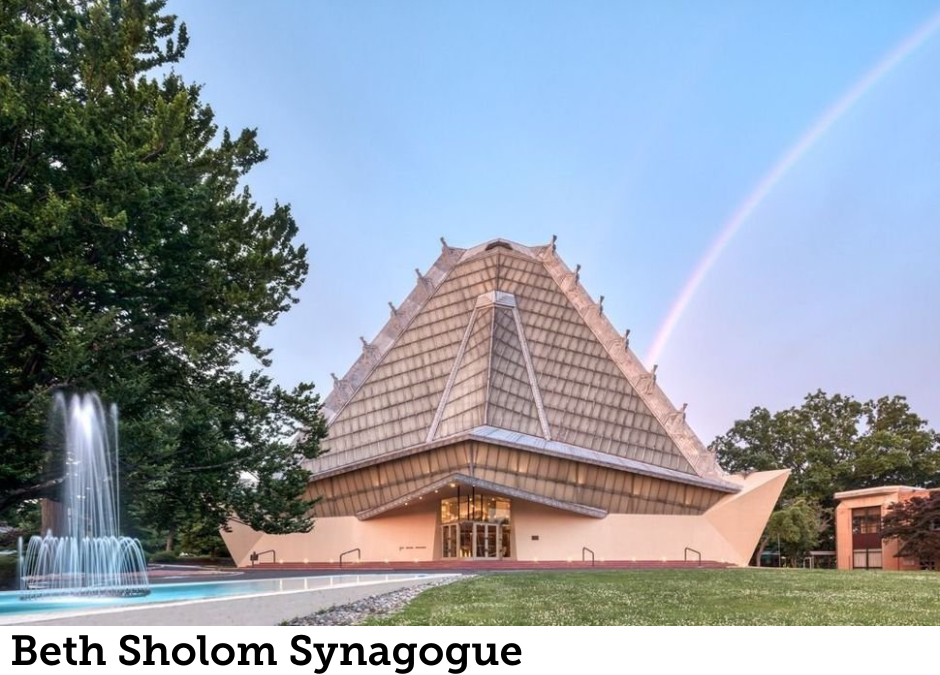“Full Circle”: An Invitation from the Executive Director
By Vonda Givens, Executive Director
When I began this job in 2008, Jan Wells, a Trustee at the time, mentioned a trip to Bryn Athyn, Pennsylvania, that had been organized as a Farms Afield by the museum. It was the first time I’d heard of Farms Afield. It was also the first time I’d heard of Bryn Athyn.
I don’t know who organized the trip to Bryn Athyn. I don’t know who coined the name Farms Afield. I wish I did. I’m confident someone with long knowledge of this museum can tell me (if you know, just reply to this message). I also don’t know how long it has been around. Maybe 20 years?
I found pictures of the Bryn Athyn Farms Afield in my files. I know now that I was looking at Bryn Athyn Cathedral, and I remember thinking, I want to go there.

It took seventeen years, but I eventually got to Bryn Athyn—pronounced “brin aa-then,” like Athens—and I’m delighted to be returning this fall for a more extended tour of the entire campus, when the museum hosts another Farms Afield in the area.
Once I began planning Farms Afield trips, my first was to the Wadsworth Atheneum in Connecticut, I put Bryn Athyn in the back of my mind because the museum had already been there. And in the meantime, many other places pushed their way to the front.
First, we hosted day trips closer to home like the George Nakashima Woodworkers campus in New Hope, PA or the Metropolitan Museum of Art in New York City. Then for Craftsman Farms’ 100th anniversary, we planned an excursion to Syracuse, NY to “walk in Stickley’s footsteps”—and after that experimental multi-day trip we were, as they say, “off to the races.”
We’ve been all over the U.S. Cities have included: Boston, Detroit, Nashville, Wilmington, New York City, and Berkeley. On the Berkeley trip, incidentally, we toured the lovely Swedenborgian Church of San Francisco, which, like Bryn Athyn, was founded upon the teachings of Emmanuel Swedenborg. (Who would have thought I’d make it to the Swedenborgian Church of San Francisco, more than 2600 miles away, before getting to Bryn Athyn, less than two hours away?)
We’ve gone to historic resorts like Mohonk Mountain House in the Catskills and our most recent trip to Sagamore Resort on Lake George in the Adirondacks (not to be confused with another trip, when we rented out Great Camp Sagamore, also in the Adirondacks, and the early 20th century rustic camp of the Vanderbilt family).
It took a lot of years and miles in between, but I finally did get to Bryn Athyn, when Parker Sanchez and I traveled there last spring to preview it for a possible fall trip.

Picturesque Bryn Athyn, founded as a religious community in the late 19th century by members of a Christian denomination known as the New Church, has a fascinating history and feels like a park that happens to have extraordinary architecture across its landscape. The entire historic district was, in 2008, designated a National Historic Landmark. When we visit, we’ll tour all three of the District’s important architectural structures.

We’ll begin our day with a visit to Cairnwood, the residence built for nineteenth-century industrialist John Pitcairn and his family. Cairnwood, designed by John M. Carrère and Thomas Hastings, was completed in 1895, and Fredrick Law Olmsted’s firm was engaged in designing the grounds and gardens of the estate.
Next we’ll tour Bryn Athyn Cathedral, which is perfectly situated on a hill overlooking the picturesque Pennypack Creek Valley. The Cathedral, designed in a Gothic and Romanesque style, was primarily constructed between 1913 and 1928. All work on the Cathedral took place on-site, and its symbolic plan is based on the teachings of the New Church.
After lunch, we’ll end our day exploring the castle-like Glencairn, which we will have seen throughout the day towering impressively over the historic district. Built in a style based on medieval Romanesque architecture between 1928 and 1939, it was home to Raymond and Mildred (Glenn) Pitcairn and their children, until Mildred’s passing in 1979. It is today a not-for-profit museum of religious art and history.


The following morning, we’ll tour Beth Sholom Synagogue, another important architectural and historic landmark, just minutes away from Bryn Athyn. In 1953, Rabbi Mortimer J. Cohen persuaded Frank Lloyd Wright to accept the commission for the only synagogue designed by Wright. The Synagogue, with its glorious geometric rotunda, was dedicated just over five months after Wright’s death. (I haven’t seen inside yet, and I can’t wait to tour it!)
We’ll stay at the Joseph Ambler Inn. I’ve never seen another hotel like it. Joseph Ambler purchased the property in 1723, and his family and descendants resided there for 100 years. In the 1930s the property and its structures became a bed and breakfast. Over the years, additional historic homes were moved to the property, and their preservation also allowed the hotel to expand. It is now a campus with a lovely restaurant and grounds and multiple historic homes, each with its own character, and each with distinct hotel rooms and common areas. The charming, quiet campus of the Inn feels like an oasis right outside of Philadelphia.

It’s amusing to me that, years ago, when I became aware of Farms Afield through Jan Wells, Bryn Athyn had been a recent destination for the museum. It feels suitable now that, before my departure later in the fall, Bryn Athyn will be my last Farms Afield destination. It’s a cliché, but I have to say, this feels like a full circle moment. I didn’t plan it this way, but I could not have planned it better.
